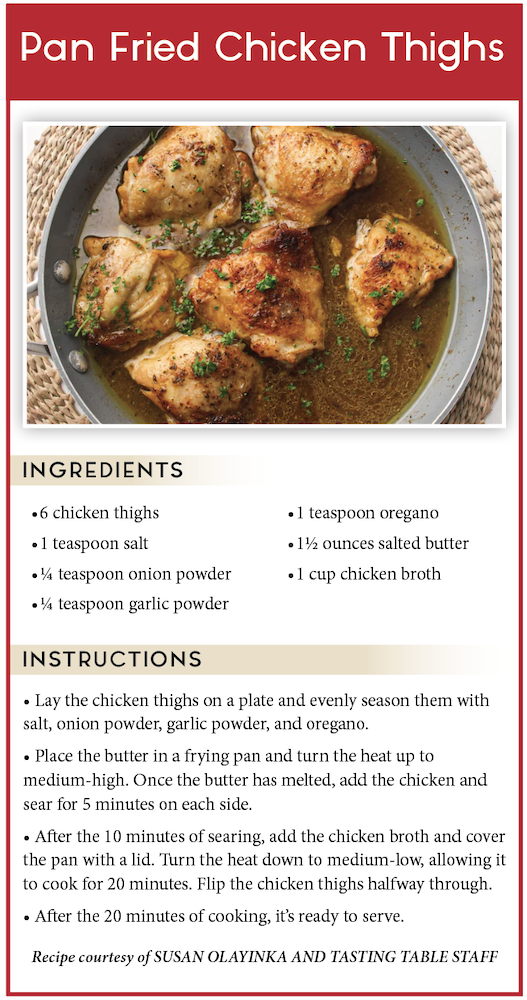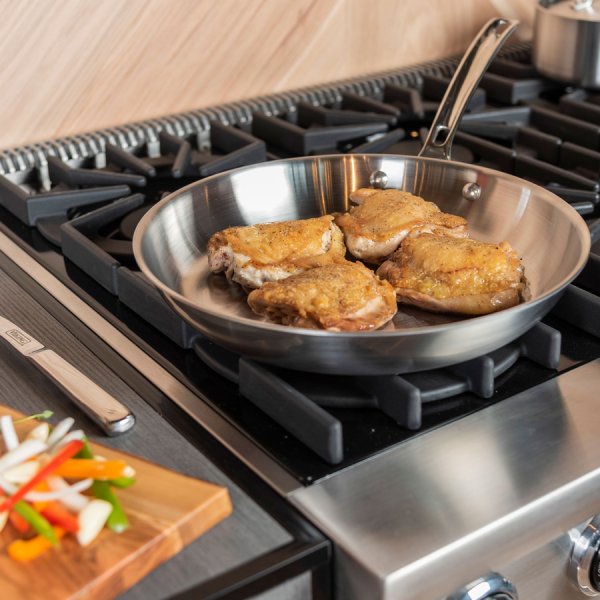Hellomy Foodie Friends!
There are so many “must haves” in the kitchen. As I was cooking with Paula the other day, I found myself using the term “pass the frying pan” and using it more than once. I realized that the frying pan (skillet) is one of my most used cookware tools. A frying (skillet) pan is a flat-bottomed, shallow pan with a slanted side and long handles. It is designed for sautéing or for shallow-fry foods. Frying pans come in various sizes from 8” to 12” (with some at 7, 9, and 11”). There are a variety of surfaces that include ceramic, non-stick, stainless steel, carbon steel, and cast iron.
The frying pan can be considered an essential for any kitchen. They are easy to use and offer the ability to create a surface that heats up quickly. They are a versatile tool to use from frying to browning, searing, oven finishing using for pan sauces, or for making eggs in. With the frying pan being an integral part of the kitchen, care of the frying pan is very important to keep in mind based on what they are made of. Frying pans such as cast iron and carbon steel ones require seasoning upkeep. Frying pans with ceramic and non-stick surfaces require proper care with the types of tools used within the pan, how they are cleaned, and the temperature they are cooked with. An important point to know about frying pans is the way you use the heat.
Stainless steel frying pans are a work horse. The multi-ply pan comes with an aluminum or copper core with stainless steel coated on the inside and outside of the pan. The multi-ply pan functions as a heat conductor. You can cook practically anything in a stainless- steel frying pan. They can tolerate higher levels of heat than a non-stick pan and are typically safe to put in the oven (of course use an oven mitt when taking it out of the oven since the handle will be hot). They are great for menu items that require high sears and oven finishes like steak, chicken, and pork. When cleaning a stainless-steel pan, cool the pan first. You may need to soak it. Use an item like Bar Keepers Friend as a mild and safe product to scrub your pan back to its beautiful stainless finish. We encourage hand washing versus putting in the dishwasher.
When using a non-stick frying pan, keep in mind that the non-stick coating can be compromised from excessive heat. The non-stick pan is best for delicate foods like eggs, fish, crepes, or various sauces that require low to medium heat. Acidic foods can also wear away the coating. Most non-stick pans require the use of wood, silicone, nylon, or rubber utensils. There are many new non-stick pans that now permit the use of metal tools. It is not recommended to put non-stick pans in the dishwasher as the surfaces usually cannot handle the dishwasher heat. The most important part of caring for your non-stick fry pan is to not go above medium heat.
Cast iron and carbon steel frying pans are heavy and very versatile. They can be used from cooking eggs, to frying, searing, and baking. You can use higher temperatures with cast iron. However, cast iron and carbon steel pans need to be seasoned and properly maintained. There are coated cast iron pans that are glazed with an enamel coating that makes it easier to clean.
The bottom line is you need to determine what your cooking style is and what you wa.nt to use the frying (skillet) pan for to choose the right kind of pan. You may need several for various foods that you are cooking.
Stop by Compliments to the Chef, your Neighborhood Kitchen and Cutlery store located at 33 Railroad Place to round out your kitchen with the tools you need to create your best possible culinary collection. Remember my Foodie Friends, “Life Happens in the Kitchen.”
Take Care, John & Paula

